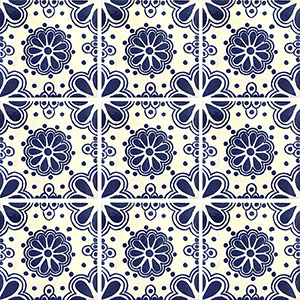Talavera ceramic is mostly used to make utilitarian items such as plates, bowls, jars, flowerpots, sinks, religious items and decorative figures. However, a significant use of the ceramic is for tiles, which are used to decorate both the inside and outside of buildings in Mexico, especially in the city of Puebla. The Puebla kitchen is one of the traditional environments of Talavera pottery, from the tiles that decorate the walls and counters to the dishes and other food containers. It is a very distinct style of kitchen. In monastery kitchens of the area, many of the designs also incorporate the emblem of the religious order. Many of the facades in the historic center of Puebla are decorated with these tiles.
The Puebla kitchen is one of the traditional environments of Talavera pottery, from the tiles that decorate the walls and counters to the dishes and other food containers. It is a very distinct style of kitchen. In monastery kitchens of the area, many of the designs also incorporate the emblem of the religious order. Many of the facades in the historic center of Puebla are decorated with these tiles.
These tiles are called azulejos and can be found on fountains, patios, the facades of homes, churches and other buildings, forming an important part of Puebla’s Baroque architecture. This use of azulejos attested to the family’s or church’s wealth. This led to a saying “to never be able to build a house with tiles”, which meant to not amount to anything in life. Being able to show this kind of wealth was not restricted to Puebla. In Mexico City, the church of the Convent of La Encarnacion and the church of the Virgin of Valvanera both feature cupolas covered in Talavera. The most famous example of Talavera in the capital city is the Casa de los Azulejos, or House of Tiles, which is an 18th-century palace built by the Count del Valle de Orizaba family. What makes this palace, in the City of Palaces, distinct is that its facade on three sides is completely covered in expensive, blue-and-white tile – sensational at the time the tiles were applied.
